MusicRadar Verdict
EastWest has created a worthy addition to the applauded Hollywood Orchestra series, which provides enormous variety and tonal colour, applicable to a diverse set of musical placements.
Pros
- +
Extremely versatile string suite.
- +
Capable of a number of timbral colours.
- +
Large articulation set.
- +
User settings can be flexibly applied using Opus.
- +
Exceptionally low latency, in performance and playback.
Cons
- -
Some legato patches tend to ‘swell’ unnaturally.
- -
Slow downloading times can occur during installation.
MusicRadar's got your back
EastWest Sounds Hollywood Strings 2: What is it?
It surely won’t come as any huge surprise that any product branded with ‘Hollywood’, goes deep on the world of film and cinema. In true cinematic style, EastWest’s Hollywood Strings returns for a sequel, but does it live up to the reputation of the original blockbuster?
EastWest Sounds has been providing composers and producers with a broad spectrum of sample libraries since 1988. From relatively humble beginnings, which saw the company creating drum samples, it has established a firm reputation for providing exceptional sound sources, which are ideal for soundtrack scoring, although many of its sounds will feel equally at home in a number of other production scenarios. From the impressive Stormdrum series, to full orchestras and choirs, EastWest has something for all of your needs and for every sonic identity and production you can think of.
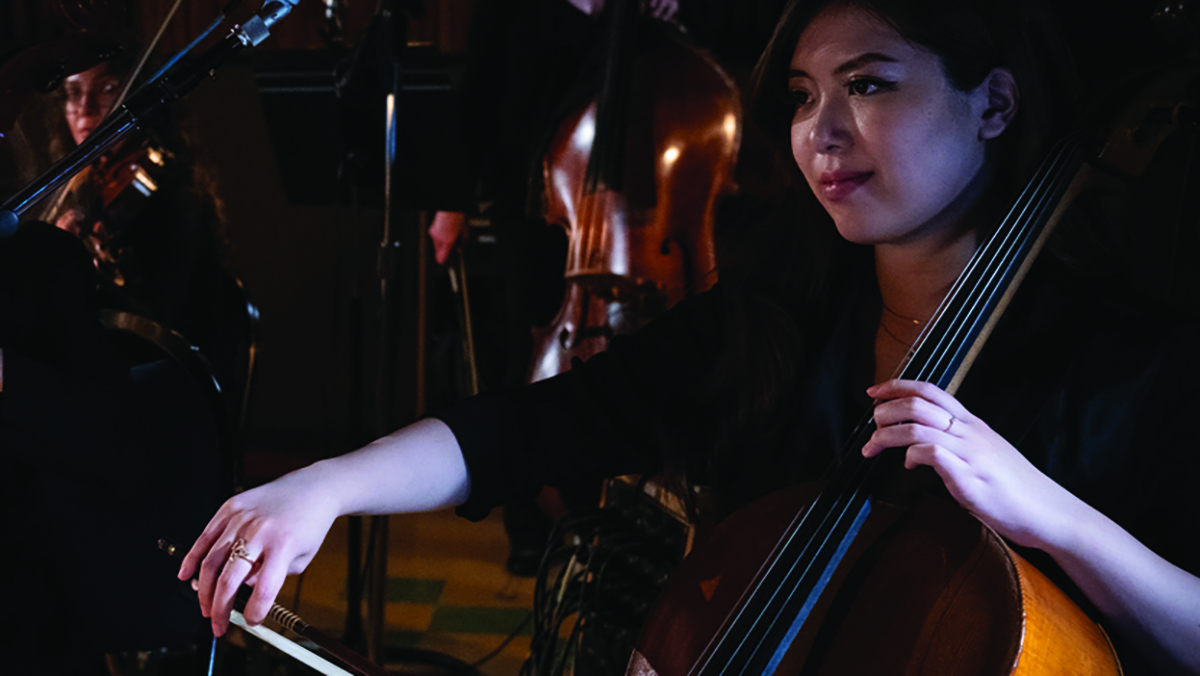
For its latest release, it returns to the traditional string section fold. Hollywood Strings 2 features a 21-piece string orchestra, recorded in the more intimate surrounding of Studio 2 at EastWest’s own recording facility, on Sunset Boulevard in LA. The section features six 1st violins, four 2nd violins, four violas, four celli and three double basses.
This size of ensemble is very common in media circles, particularly for television-based productions, where composers may be working to a smaller budget than feature film. Despite financial constraints, it remains a favoured ensemble size, providing a beautiful balance between intimacy and sonority, with impactful elements, which may be amplified through closer miking.
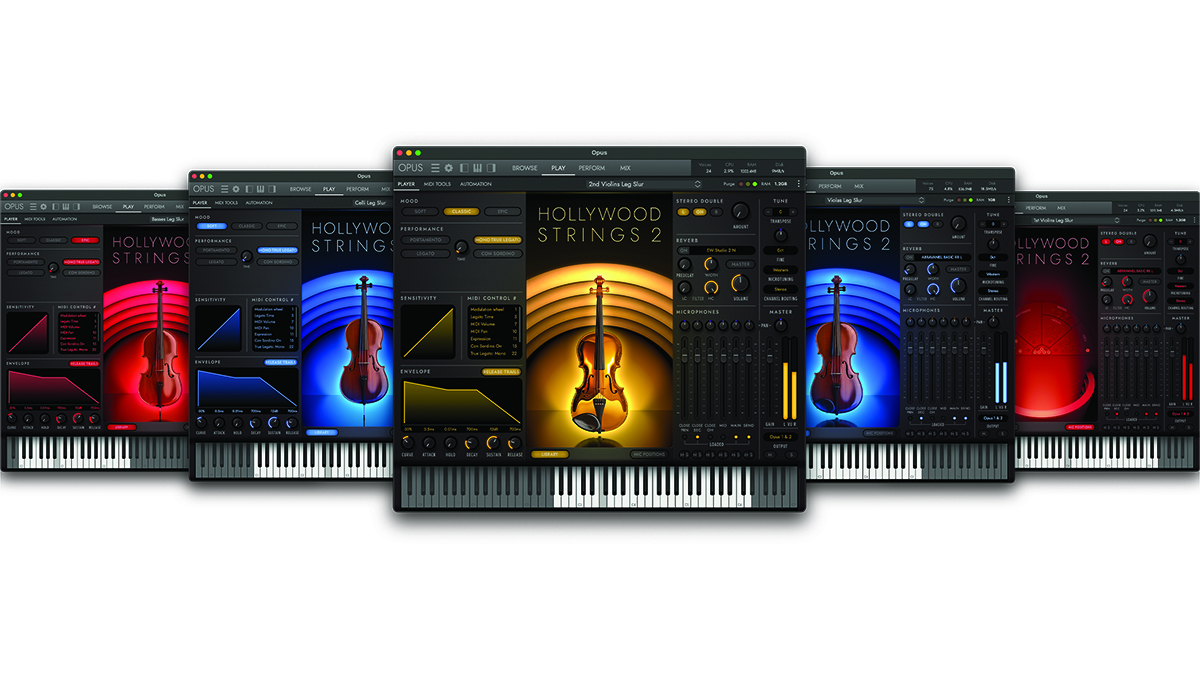
EastWest Sounds Hollywood Strings 2: Performance and verdict
The library operates from within EastWest’s Opus software; this virtual instrument has become pretty established, replacing its previous Play instrument. Anyone experiencing Opus for the first time will feel instantly at home. You can access all of EastWest’s libraries from here, with an interface which is far more engaging than their previous engine.
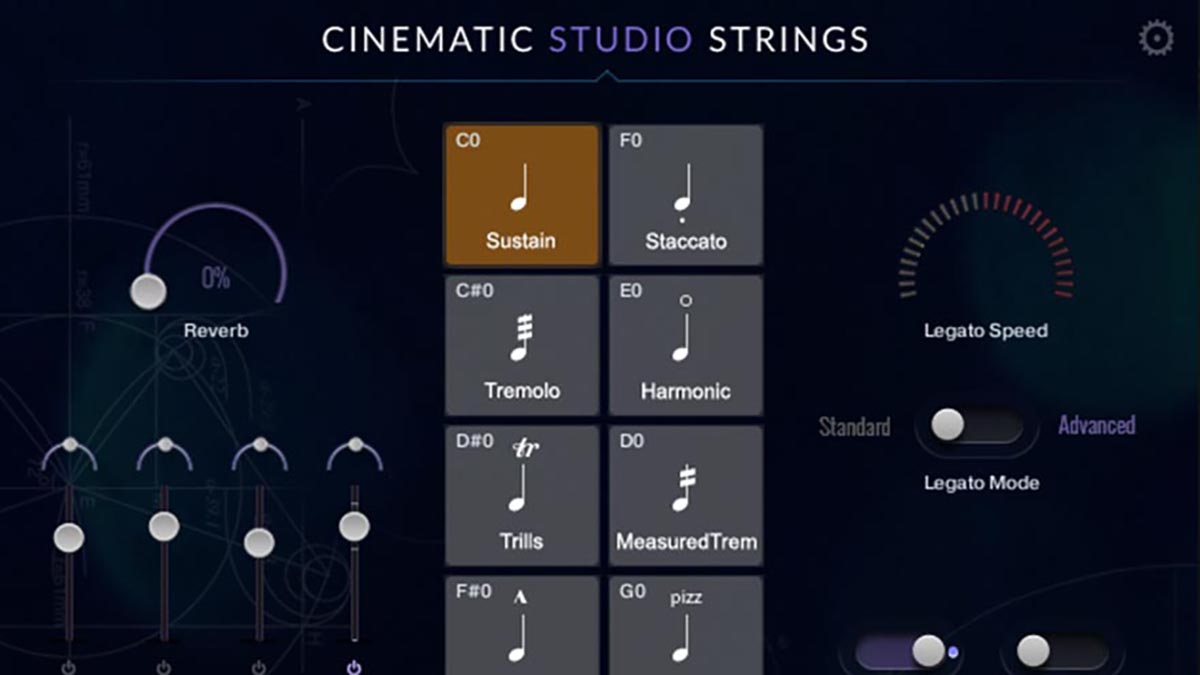
• Cinematic Studio Series Strings
Powered by NI Kontakt, this provides a similar-sized ensemble, recorded in a soundstage environment. The interface engages with you, as you play.
• Spitfire Audio Chamber Strings
Recorded at AIR studios, this suite pits 16 string players across 244 articulations. Chamber Strings has become one of the most respected libraries in their catalogue.
From the Browse page, you immediately gain access to the five included instruments within the library, with a sixth instrument that comes in the guise of Full Strings. Articulations are then subdivided into five groups; Long, Short, Effects, Legato and Keyswitch.
As we begin to audition each instrument, with the aim of building up a relatively dynamic track, the substantial number of articulation options are helpful. There is considerable choice, but it’s not overwhelming, with the long and sustained articulations sounding rich and full-bodied. Due to the size and intimacy of the ensemble, you can really hear the rosin on the bow, which exudes clarity within the overall sound. Moreover, there is considerable scope for dynamic control, which can become pretty indispensable.
Want all the hottest music and gear news, reviews, deals, features and more, direct to your inbox? Sign up here.
Everybody has their preferences for the sounds they may enjoy working with, and while it is fair to say that there is something for everyone, our personal taste suggests that at the higher dynamic level, the overall colour of the palette can sound quite brittle. This is undoubtedly because of the close mic signals, but there are options to help alleviate this.
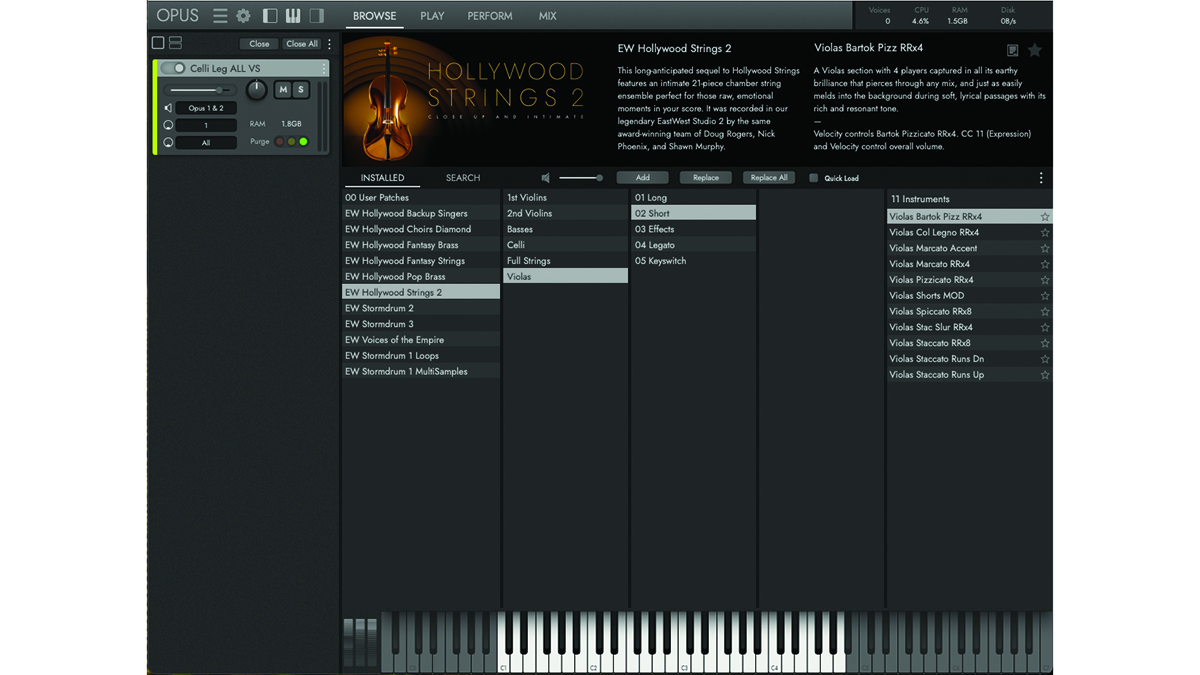
Feeling Moody
If you yearn for a slightly softer string palette, the norm would be to visit the mix page, where you will find individual microphone signals. As much of exhibited brittleness is created by the close mic’ing, you can easily pull back the closer signal in the mix.
However, EastWest has clearly already thought this one through, with the brilliant utilisation of three ‘Mood’ settings. Located at the instrument level on the Play page, you can dictate the overall colour of the instrument. By default, this is set to the Mood described as Classic, which is our setting for much of this review. But you can ramp the sound up further, by employing the Epic setting, or reduce the impact by employing the Soft setting, which immediately became our preference, being a more European sound, intrinsically linked with more emotive scoring. You can change your mood on-the-fly, according to your writing style, but as the sample tone effectively deviates with each mood, this may inform the way you play or compose.
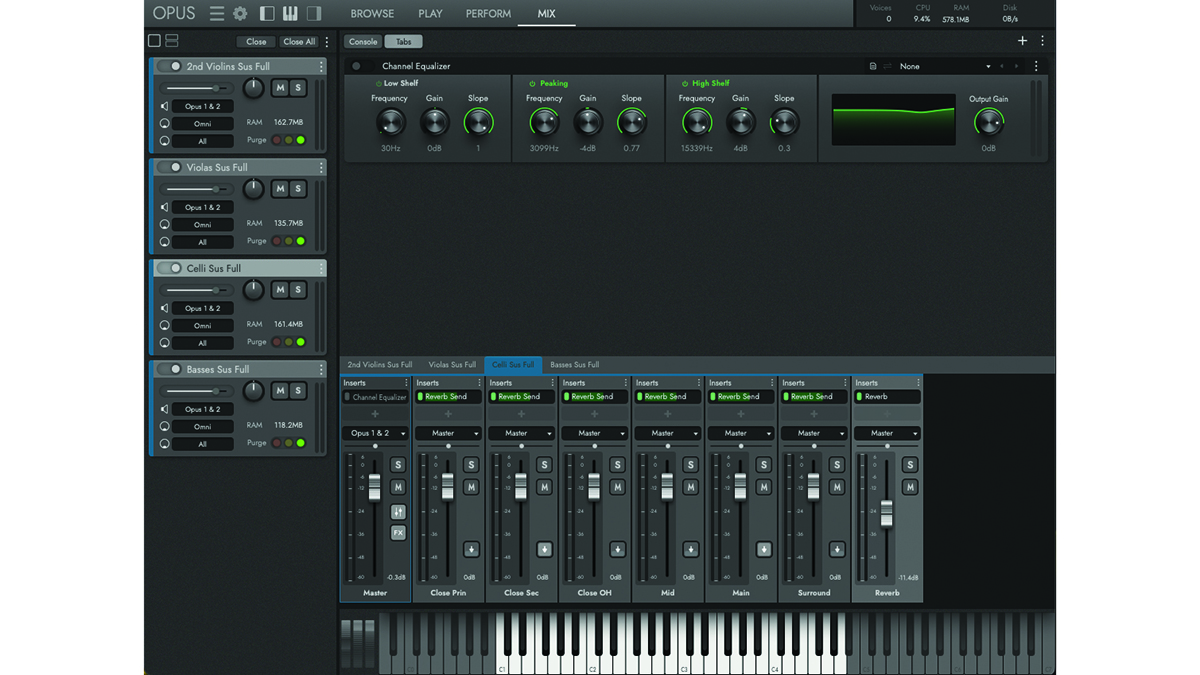
Going short
The short articulation sections, within each instrument, are similarly abundant with Marcato, Staccato and Pizzicato patches, in varying capacities. There are also several examples of round-robin, containing up to 10 different sample iterations. We also see the return of the modulation wheel control, to shift between short articulations. This has always been a nice idea in theory, but can be quite difficult to get the hang of in a practical sense. It’s possibly better served within the context of a DAW, wherein you’re granted the capacity to specify the exact location of the modulation wheel on-screen.
Some of the shorter samples adopt a similar brittle tone colour, as we discovered with the longer articulations. With a lack of timbral dynamic control, due to the shortness of the samples, we have to rely on expressive volume to take up the dynamic slack. A visit to the mix page or Mood settings will allow a softening of this texture, however we have to give high praise to the pizzicato articulation, which is exceptionally impressive indeed. There are also equally impressive Staccato Run samples, which handle swift scalic passages with enormous ease, while maintaining a sound which is incredibly authentic.
Moving to the Effects section, we find only three articulations; the Flautando and Harmonics samples are superb in use, in the context of a sample which is admittedly less likely to be employed, while Tremolo does the trick nicely, albeit with that sense of harshness at the higher dynamic level.
Smoothly does it!
Much like the other articulation sets, the final Legato articulation section is brimming with options. Some of the differences across the legatos can be difficult to hear, but the overarching point is that many of these patches are very usable. We were particularly impressed by the exceptionally low latency, which is so often an issue for legato playing within the DAW-based environment.
However, the strength of the legato does appear to vary from one instrument to another. To our ears, the viola legato performed superbly; from the full-on Molto Legato, to the more subdued portamento slur, it is a very classy instrument to work with. The violins, on the other hand, exhibit a degree of swelling as the note emerges after its initial bowing begins. This can be very common in legato circles, but did feel a little excessive, particularly when it comes to the higher dynamic register. Meanwhile, the cello section also exhibits minor swells, but nowhere near to the same degree. We also need to point out occasional glitches in the legato sound, which are likely to be eradicated with future library updates.
Thankfully, because of the significant options across the Legato articulations, you will probably be able to find something that works with your cue, though individual programming can do much to lessen any issues that might make your string section sound unrealistic.
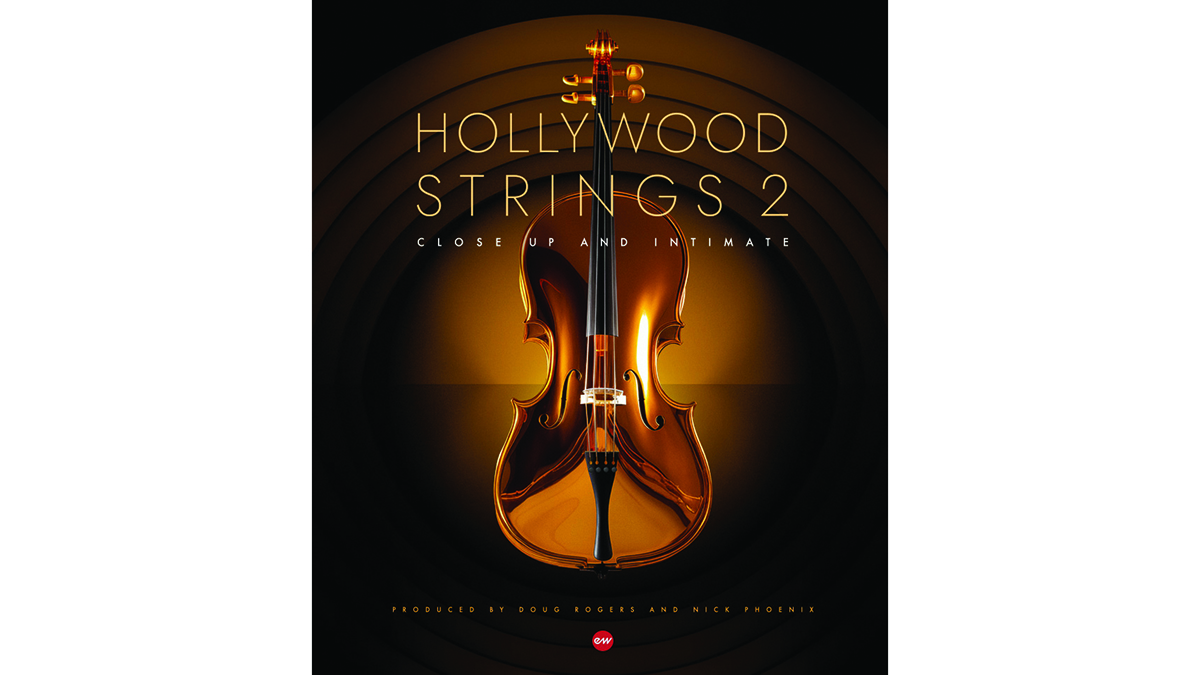
It’s a wrap!
Hollywood Strings 2 is a classy and versatile performer. It contains a significant number of articulation options, despite the relatively modest 160GB data footprint.
It contains a significant number of articulation options, despite the relatively modest 160GB data footprint
Within the Opus instrument, sample loading is fast, while its low-latency performance is very impressive indeed. This does come with the price of CPU loading, which is definitely hungrier than other similar sample-based options, from other brands.
The included ensemble size is arguably perfect for both commercial and cinematic applications, and with a richly diverse sound palette, this is a very usable library, at both the practical and sonic levels.
MusicRadar verdict: EastWest has created a worthy addition to the applauded Hollywood Orchestra series, which provides enormous variety and tonal colour, applicable to a diverse set of musical placements.
EastWest Sounds Hollywood Strings 2: The web says
"The more intimate sound, and the excellent close‑miking options, deliver something distinct from, but complementary to, HS1. It sounds fantastic."
Sound On Sound
EastWest Sounds Hollywood Strings 2: Hands-on demos
EastWest Sounds
Guy Michelmore
Adore The Red
Archie Beatz
EastWest Sounds Hollywood Strings 2: Specifications
- macOS 10.15 (or later).
- Windows 10 with ASIO sound drivers.
- CONTACT: EastWest Sounds
Roland Schmidt is a professional programmer, sound designer and producer, who has worked in collaboration with a number of successful production teams over the last 25 years. He can also be found delivering regular and key-note lectures on the use of hardware/software synthesisers and production, at various higher educational institutions throughout the UK




